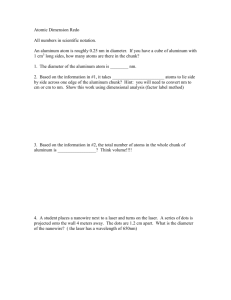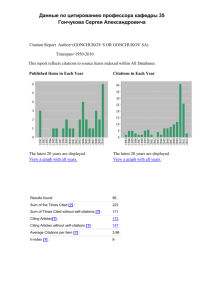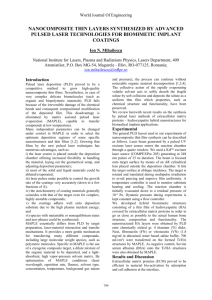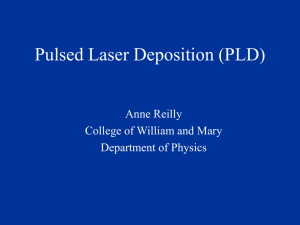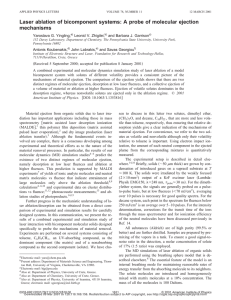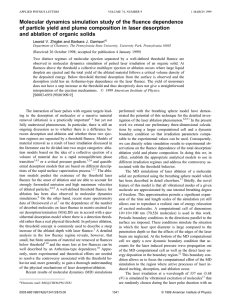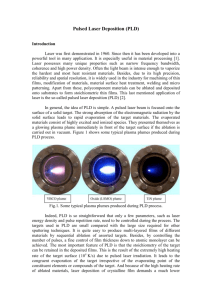13:35 Aluminum metal versus aluminum oxide fabricated by
advertisement
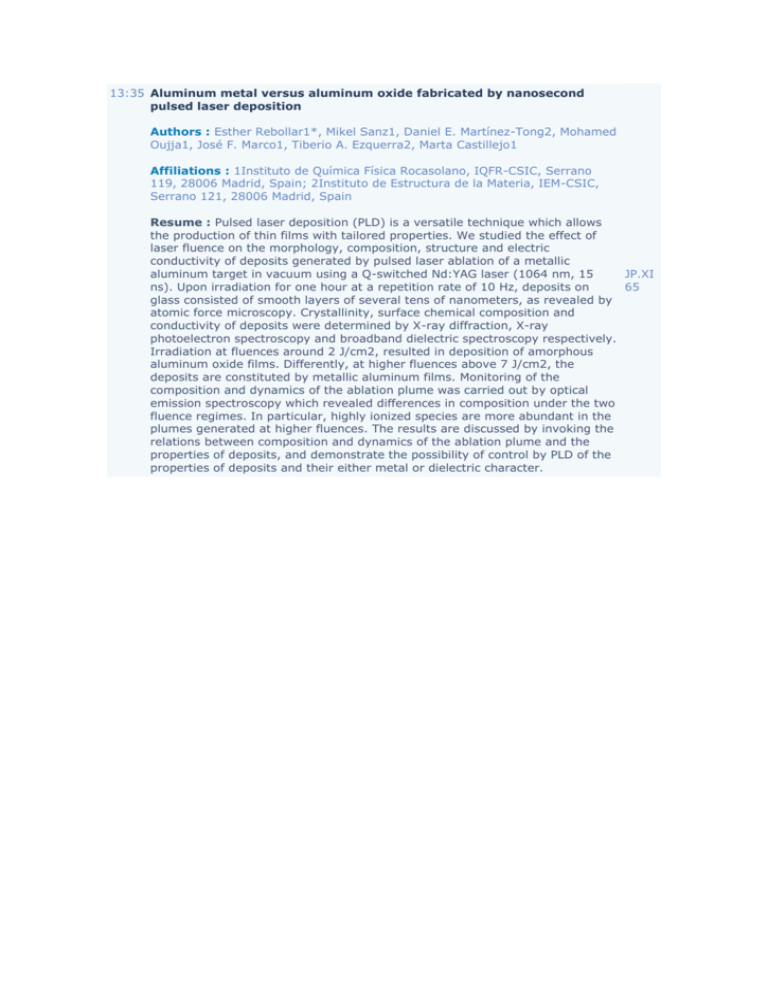
13:35 Aluminum metal versus aluminum oxide fabricated by nanosecond pulsed laser deposition Authors : Esther Rebollar1*, Mikel Sanz1, Daniel E. Martínez-Tong2, Mohamed Oujja1, José F. Marco1, Tiberio A. Ezquerra2, Marta Castillejo1 Affiliations : 1Instituto de Química Física Rocasolano, IQFR-CSIC, Serrano 119, 28006 Madrid, Spain; 2Instituto de Estructura de la Materia, IEM-CSIC, Serrano 121, 28006 Madrid, Spain Resume : Pulsed laser deposition (PLD) is a versatile technique which allows the production of thin films with tailored properties. We studied the effect of laser fluence on the morphology, composition, structure and electric conductivity of deposits generated by pulsed laser ablation of a metallic aluminum target in vacuum using a Q-switched Nd:YAG laser (1064 nm, 15 JP.XI ns). Upon irradiation for one hour at a repetition rate of 10 Hz, deposits on 65 glass consisted of smooth layers of several tens of nanometers, as revealed by atomic force microscopy. Crystallinity, surface chemical composition and conductivity of deposits were determined by X-ray diffraction, X-ray photoelectron spectroscopy and broadband dielectric spectroscopy respectively. Irradiation at fluences around 2 J/cm2, resulted in deposition of amorphous aluminum oxide films. Differently, at higher fluences above 7 J/cm2, the deposits are constituted by metallic aluminum films. Monitoring of the composition and dynamics of the ablation plume was carried out by optical emission spectroscopy which revealed differences in composition under the two fluence regimes. In particular, highly ionized species are more abundant in the plumes generated at higher fluences. The results are discussed by invoking the relations between composition and dynamics of the ablation plume and the properties of deposits, and demonstrate the possibility of control by PLD of the properties of deposits and their either metal or dielectric character.
